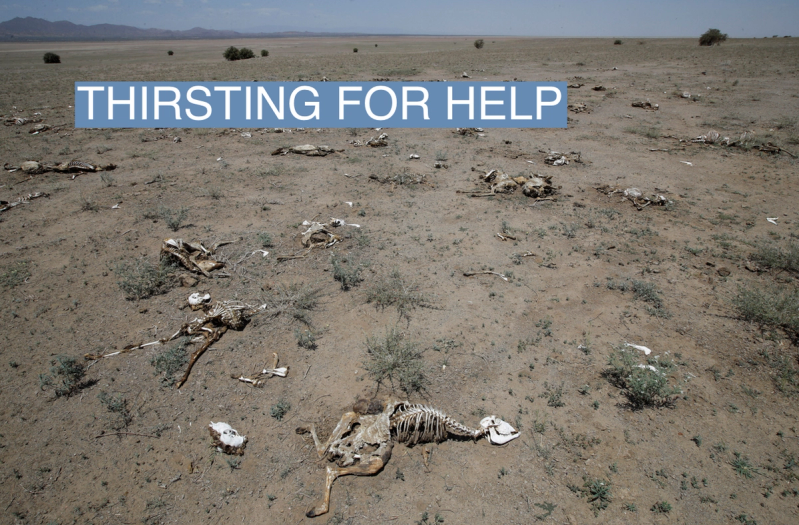The News
Sharm El-Sheikh, Egypt — At this year’s major climate summit, developed nations hashed out an agreement to pay developing countries for some kinds of climate damage but clashes remain over how and when such funding should be doled out.
Past summits have focused on future global warming. This year’s gathering — dubbed COP27 — will be more about the brutal impact of climate change today.
The developing countries pressing for help include COP27 host Egypt, Pakistan, Bangladesh, all of the sub-Saharan countries of Africa, a coterie of South Pacific island nations and many others.
They argue this is only fair since rich countries are responsible for the greenhouse gas emissions that created the problem of global warming, and haven’t done nearly enough to reduce emissions so that future damage could be avoided.
Developed countries yesterday officially agreed to wrangle with the matter for the first time yesterday as COP27 began in Sharm el-Sheikh, Egypt. Worried about being boxed into formally accepting unending responsibility for future climate damage, they had resisted doing even this step at last year’s conference in Glasgow, Scotland.

Bill’s view
The intense focus on compensation for climate damage amounts to a profound shift in the dynamics of global climate diplomacy.
The landmark Paris Accord made fighting climate change a sort of team sport, with each nation doing its part. The events of the past year are increasingly pitting developing countries against developed ones.
This lens sees climate diplomacy as essentially a struggle for resources, not just to prevent climate change but also to adapt to the changes and seek compensation for the growing number of victims.
The tensions aren’t going away with yesterday’s decision to formally take up the issue at this COP. That’s because the vast majority of funds for climate initiatives of all types come from developed nations and three-quarters of it was directed into their own domestic efforts, according to the Climate Policy Initiative, an advocacy group that tracks climate funding flows.
Adding insult to injury: More than a decade ago, developed countries made a specific commitment to deliver at least $100 billion annually in climate funding to developing countries starting in 2020. To the growing anger of developing countries, the commitment has yet to be met and won’t be until next year, according to developed countries.
Meanwhile, developing nations now see the $100 billion as just a first step towards meeting a far larger obligation to help them deal with the damage caused by climate change.
Room for Disagreement
Some COP observers still see a path through the simmering tensions that would leave the Paris dynamics of mutual effort in place, if frayed.
David Waskow, director of the International Climate Initiative at the World Resources Institute, doesn’t hold out much hope for this year’s COP coming up with a specific agreement for providing funding for past climate damage or even trying to minimize future losses. But he says developed and developing countries could agree to design a concrete mechanism over the next few years for doing that.
“It’s critical to have clarity about a process going forward that will end in decisions about financing,” he says. “There do need to be decisions on finance for loss and damage.”
The View From Kenya
For Benjamin Galwaha, a cattle herder in northern Kenya, the debate over blunting the effects of climate change isn’t an abstract one. He’s increasingly worried about feeding himself, his wife and three children, and his mother.
For the first time in his life, Galwaha personally knows someone who died of starvation, an older man in his community. He’s heard stories of villages pillaging neighboring villages of grains. In his town, Laisamis, restaurants have been robbed of food by desperate victims of an unprecedented drought that has gone on now for more than two years.
“I have never seen anything like this. The drought has turned people into animals,” says Galwaha.
The cash-strapped government of Kenya has spent $45 million to try to avert widespread famine, which is exacerbated by the prolonged weather extremes that accompany climate change.
About 4.2 million Kenyans, or 8% of the population, are in need of assistance, according to the United Nations. Some 2.7 million are facing a food crisis, with another 785,000 confronted by an even more urgent food emergency, according to ASAL Humanitarian Network.
“If this drought continues this way, our way of life with our livestock will not survive,” Galwaha says.
The View From Europe
The war in Ukraine has vastly complicated the energy landscape in the United Kingdom and Europe, which have been among the most vocal climate advocates globally. At last year’s COP in Glasgow, Scotland, the U.K. pushed for strong denunciations of fossil fuels and Europe touted its green credentials. The conference ended with a call to “phase out” coal, with the Europeans and U.K. pushing to outright banish the dirtiest of the fossil fuels.
The war now has Europe scrambling for natural gas and even to restart some coal production to replace lost Russian natural gas. That helped push gas and coal use to record levels globally. This sudden re-embrace of fossil fuels has not been lost on the developing world, even as Europe and the U.K. insist the measures are emergency steps needed while they build more renewable energy.
The about-face, temporary or not, has muddied their message. And the vast outlays the two regions are making to address their domestic energy crisis leave them strapped when it comes to making new financial commitments for developing countries.
Notable
- Understanding the flow of climate investments is complicated, but this report from the Climate Policy Initiative does a better job than most breaking it down.
- The recent report by CarbonBrief explores ways international financial institutions can address the growing demands for climate finance.

